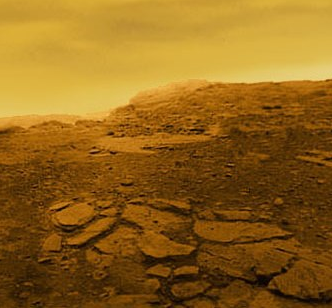By Carol Cleland (University of Colorado Boulder)
Cite as: Cleland, C. (2022) “Why astrobiologists should NOT get rid of the term ‘life’”. Primordial Scoop, e20220524. https://doi.org/10.52400/LLIX2381
In an earlier blog post and recent comment to “Cleland and Grinspoon Response to Benner”, Jan Spacek contends that “[i]f we can’t define life (or the things we ‘value’ in life)…” astrobiologists should get rid of the term ‘life’. He is wrong about this.
First, as philosopher-logicians Putnam and Kripke famously argued, one can’t define any natural kind term but that doesn’t mean that the term doesn’t play a useful role in science. Consider ‘water’. Many astrobiologists believe that life cannot exist without liquid water and hence focus their research on planets and moons on which it exists. Yet ‘water’ cannot be defined as H2O. A single molecular of H2O lacks temperature and pressure, and hence a triple point. Moreover, the “purest” samples of phenomenal water are not composed of just H2O molecules. When combined, molecules of H2O invariably dissociate into ions (H+, OH-, and H3O+). Finally, many of the distinctive phenomenal properties of water (e.g., remaining a liquid over a wide range of temperatures, expanding when frozen, being a good solvent) “valued” by astrobiologists (because they are thought to be required for life) result from secondary structures (dimers, trimers and hydrogen bonded networks) produced by “weak” hydrogen bonds among H2O molecules. Yet the inability to define ‘water’ as H2O doesn’t render the term useless for astrobiological theorizing and research.
As far as “values” are concerned, what we “value” about a given natural kind often tells us little about its objective (or lack thereof) nature. Most people “value” water for a diversity of reasons, such as its being thirst quenching and fun to swim in. Water is “valued” by astrobiologists because they believe that life cannot exist without it. But astrobiologist might discover they are wrong about this and cease to “value” water highly. The point is, as scientists, we want to know what water is independently of the beliefs we currently hold about it. The same is true of life.
It might turn out that the term ‘life’ doesn’t designate a natural category, just as mineralogists discovered that the common term ‘jade’ doesn’t designate a mineral species. “Jade” consists of two different types of minerals, jadeite, and nephrite, having very similar macroscopic properties but differing in both crystalline structure and chemical composition, the latter of which are the modern basis for classifying solid materials into mineral species. Jadeite and nephrite were originally classified as the same mineral species (“jade”) on the basis of gross macroscopic properties. That jade is not a natural kind represents an important scientific discovery having nothing to do with whether jade can be defined or has characteristics that we “value”. Jewelers value the macroscopic properties shared by jadeite and nephrite (green color, semi-transparent clarity, and fine texture) and hence continue to call both mineral species “jade.” The term ‘jade’ is no longer used in mineralogy, however.
This is a brief response to Jan’s earlier blog comparing concept life to phlogiston: the terms ‘phlogiston’ and ‘life’ aren’t comparable. Natural kind terms like ‘water’ and ‘life’ designate observable phenomena. Terms like ‘phlogiston’, luminiferous aether’, and ‘vital force’ are theoretical. The latter were introduced in the context of now defunct scientific frameworks to explain puzzling aspects of observable phenomena. The concepts associated with these theoretical terms were rejected because they (and the theoretical frameworks that subsumed them) failed to do what they were designed to do, namely, explain certain kinds of observable phenomena.
Phlogiston, for example, was a conjectured invisible substance introduced to explain why combustible bodies lose weight when they burn. When chemists discovered that certain metals gain weight when burned, phlogiston’s days as a theoretical kind became numbered. Similarly, the luminiferous aether was designed to make sense of how light (qua wave) could propagate in an apparent vacuum: The ostensible vacuum is filled with an invisible substance (an aether). When the Michelson-Morley experiment (1887) failed to detect the anticipated “aether drag” on the speed of light, the days of the luminiferous aether were numbered.
To wrap up, it is possible that science will one day discover that life is not a natural kind. This will represent an important scientific discovery, analogous to the discovery that jade is not a mineral species. But we aren’t there yet, and it certainly doesn’t follow from the fact that ‘life’ can’t be defined that life is not a natural kind. Until then, astrobiologists should continue using the term life and pondering what distinguishes life from non-life.




Thank you for your response Carol.
It is still unclear to me what puzzling phenomena ‘life’ explains, that cannot be explained by other terms such as ‘chemistry’ and ‘evolution’.
If we find an example of a complex evolving organic chemistry that does not require water as a solvent, how would we know if it is a second example of life or just “an interesting complex evolving chemistry”? What will we gain or lose by deciding to call it ‘life’ or ‘not life’?